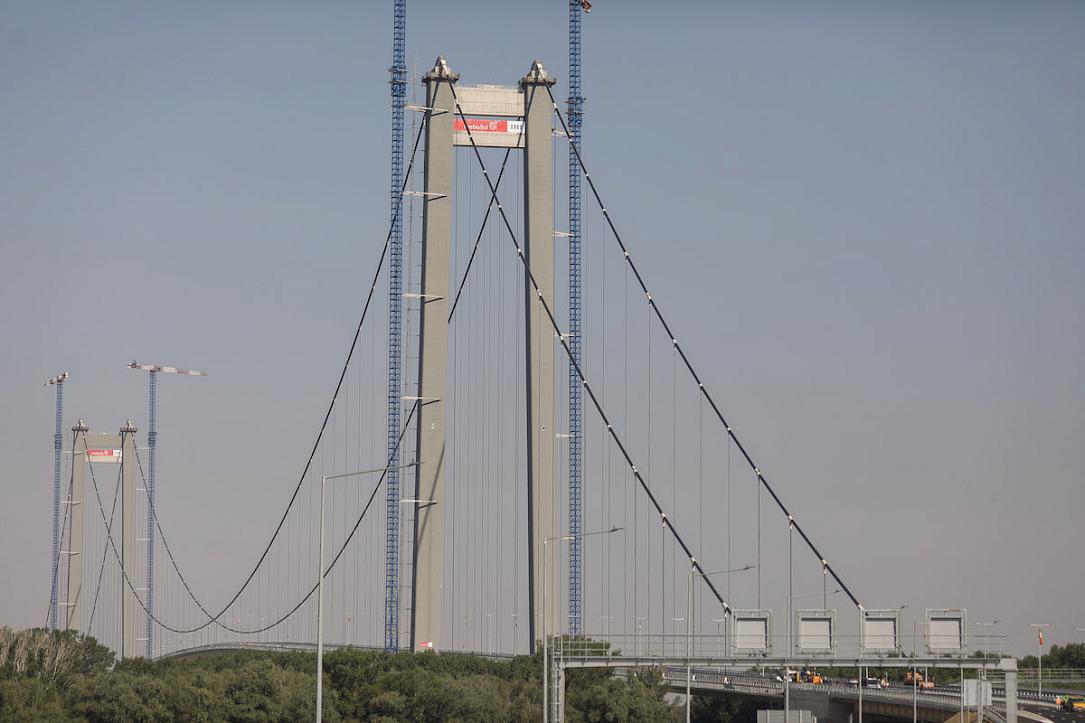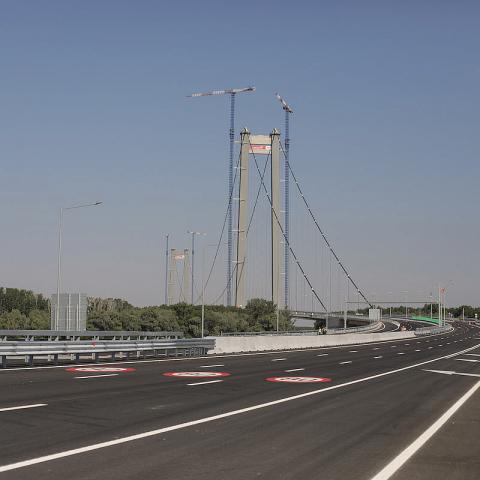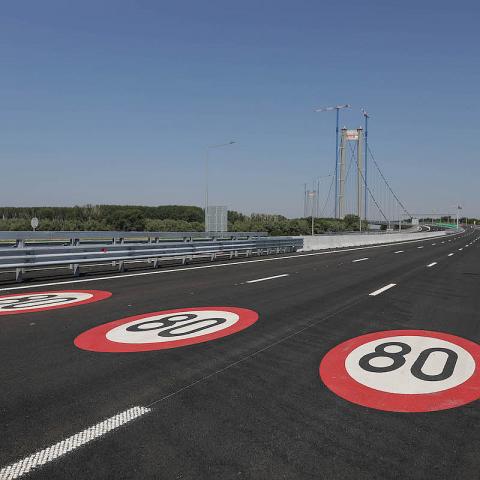Brăila bridge over the Danube: Romania inaugurates one of Europe’s largest bridges

The Brăila bridge over the Danube, one of the largest suspension bridges in Europe, the largest over the Danube, and Romania's biggest infrastructure investment of the last 30 years, was officially inaugurated Thursday, July 6. Several state officials attended the ceremony, including president Klaus Iohannis, prime minister Marcel Ciolacu, Senate head Nicolae Ciucă, and transport minister Sorin Grindeanu.
The bridge, nicknamed Romania's Golden Gate, has a total length of 1,974.3 meters, with a main span of 1,120 m and two side spans of about 490 m and 365 m long. It connects the Black Sea ports and the Danube Delta with the rest of the country and with the wider Trans-European Transport Network.
According to Transport Secretary of State Ionel Scrioşteanu, the suspension bridge has been designed to have a lifespan of 120 years. He also said that drivers would not pay a fee to cross the bridge for five years.
"Today we are living a special moment for the infrastructure in Romania," transport minister Grindeanu said at the inauguration ceremony, adding that the new bridge is the first road connection between Tulcea and Brăila counties.
In his turn, president Klaus Iohannis stated: "It is a great pleasure for me to participate in the inauguration of this bridge. It is the largest investment in Romania in the last 30 years, the third largest bridge in Europe. […] Special thanks must also go to the partners in Japan and Italy."
Also present at the opening, prime minister Marcel Ciolacu said, quoted by Digi24: "Romania sends a clear message to Europe: we want, we know and especially we can build our destiny as a strong and worthy European nation." He added: "It is the result of teamwork, of international cooperation. A Japanese consortium worked with dozens of Romanian subcontractors."
Works on the new bridge, the largest over the Danube, took about five years, and the updated value of the project exceeds RON 2.5 billion (over EUR 500 million). The EU contribution to this project amounts to EUR 363 million from cohesion policy funds.
"2 km long, 38 meters above the water and with four lanes, this suspended bridge is the largest in Romania and the largest over the Danube and, overall, the third largest suspension bridge in the EU," the European Commission said in a press release. "The bridge will allow the free transit of vessels. It will replace a slow and unreliable ferry link, which is often interrupted during winter and bad weather conditions."
The EC also said: "The bridge is a technological marvel for its towers and anchoring system. The main cables make around 81,000 km – a length comparable to twice the circumference of the Earth – and have a guaranteed lifetime of 120 years. The anchor blocks with their 47 m in diameter are buried 31 m deep, figures that very few bridge structures in the world match."
According to the same source, roughly 11,400 vehicles are estimated to use the new bridge daily, whose opening is expected to cut the travel time by approximately 50 minutes.
Transport commissioner Adina Vălean, who represented the Commission at the inauguration ceremony, said: "Brăila Bridge, one of Europe's largest and technically most sophisticated bridges, is a successful project for Romania and the EU. This new transport connection will lead to the economic development of the neighbouring communities and will positively impact Dobrogea and Moldova regions. The bridge has special importance in the current geopolitical context. A larger infrastructure capacity in the Danubian area is vital for improving UE security and ensuring the transportation of goods transiting Romania from and to Ukraine and Moldova."
Although opened for traffic, the works are not entirely completed, Hotnews.ro reported. The bridge and parts of the access roads are operational as of Thursday, while the construction of the remaining access roads is expected to be finalised by the end of 2023. Also, the new bridge is exclusively for road traffic, and pedestrians and cyclists can't cross it.
The Infotraffic Center of the Romanian Police announced on Thursday that there would be a speed restriction of 80 km/hour on the new Brăila bridge, which can be officially crossed by cars starting at 1 PM. Traffic will be suspended at night, between 9:00 PM and 6:00 AM, from Monday to Friday. These measures are valid until November 30, 2023.
irina.marica@romania-insider.com
(Photos: Inquam Photos/George Calin)
















